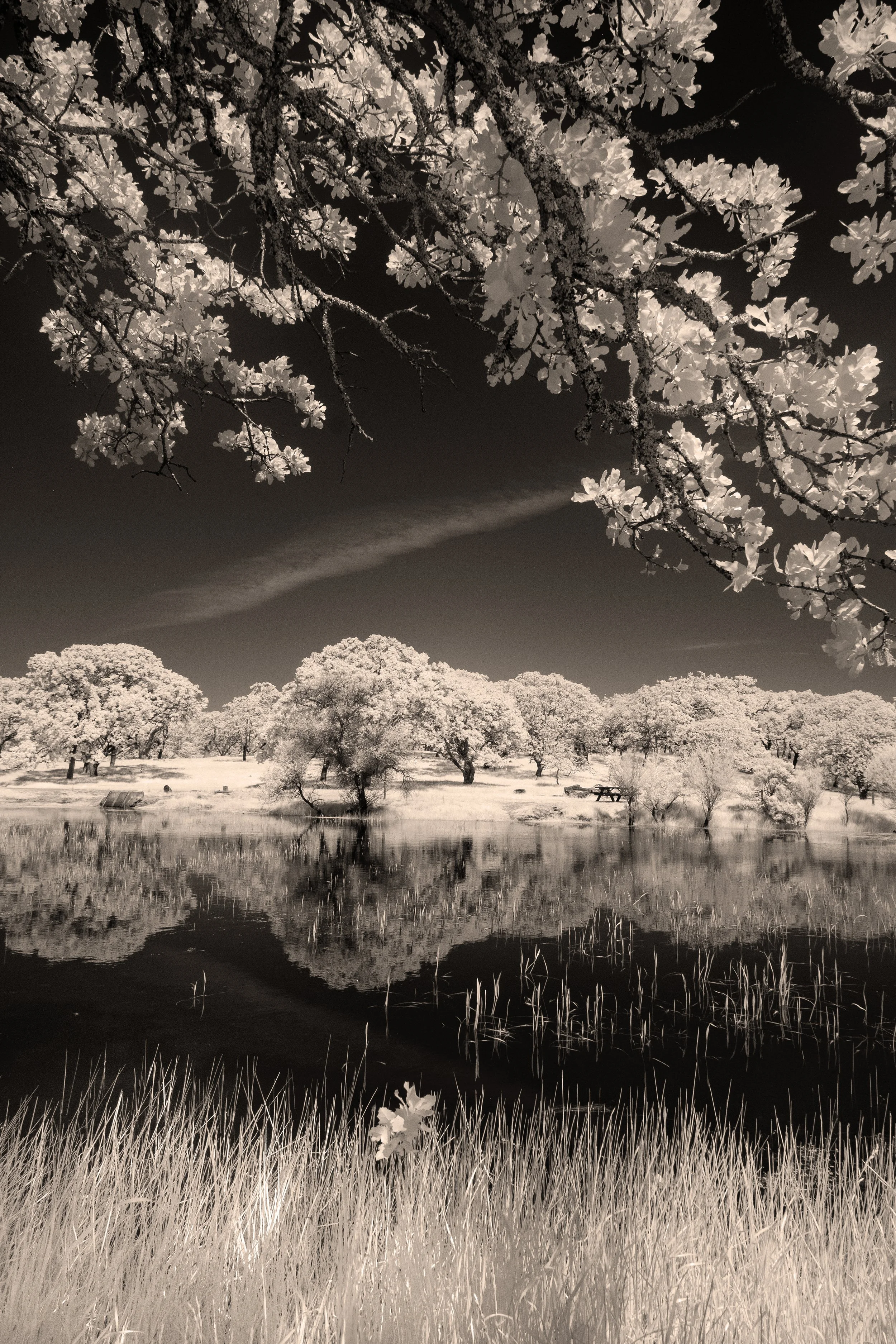As I stood beneath the arching canopy of oak, their branches reaching like gentle arms into the frame, I knew this scene needed more than stark monochrome. The midday light, though piercing, danced on the leaves in a way that called for softness—a quiet warmth to match the stillness in the air.
This image was captured in infrared, which tends to render the world in high contrast. While powerful, I’ve learned that not every scene benefits from that intensity. In this case, the bright foliage and deep shadows, when left untreated, felt too distant—too clinical. It created separation instead of connection.
That’s when I turned to sepia.
The addition of a subtle sepia tone served a specific purpose: to reduce contrast without sacrificing tonal depth. It allowed the whites of the leaves to ease into the sky, rather than confront it. The reflection in the water became an invitation, not just a mirror. The mood shifted—from visual impact to emotional resonance.
There’s a picnic bench tucked quietly in the background. You may miss it at first glance, but it’s there—waiting. The sepia helps hold it within the narrative rather than letting it fall away as a visual afterthought. It speaks of presence, of memory, of a place where someone once sat quietly to watch this same view unfold.
Infrared photography, for all its brilliance, often edges on the surreal. But I’ve found that by warming the palette, I can reclaim some of the human essence. The image becomes less about technique and more about feeling. Not nostalgia, but quiet reverence.
In the end, this photograph is not about the pond, the trees, or even the clouds whispering across the sky. It’s about creating an atmosphere where the viewer can pause—and feel like they’ve arrived somewhere familiar, even if only in memory.
M
